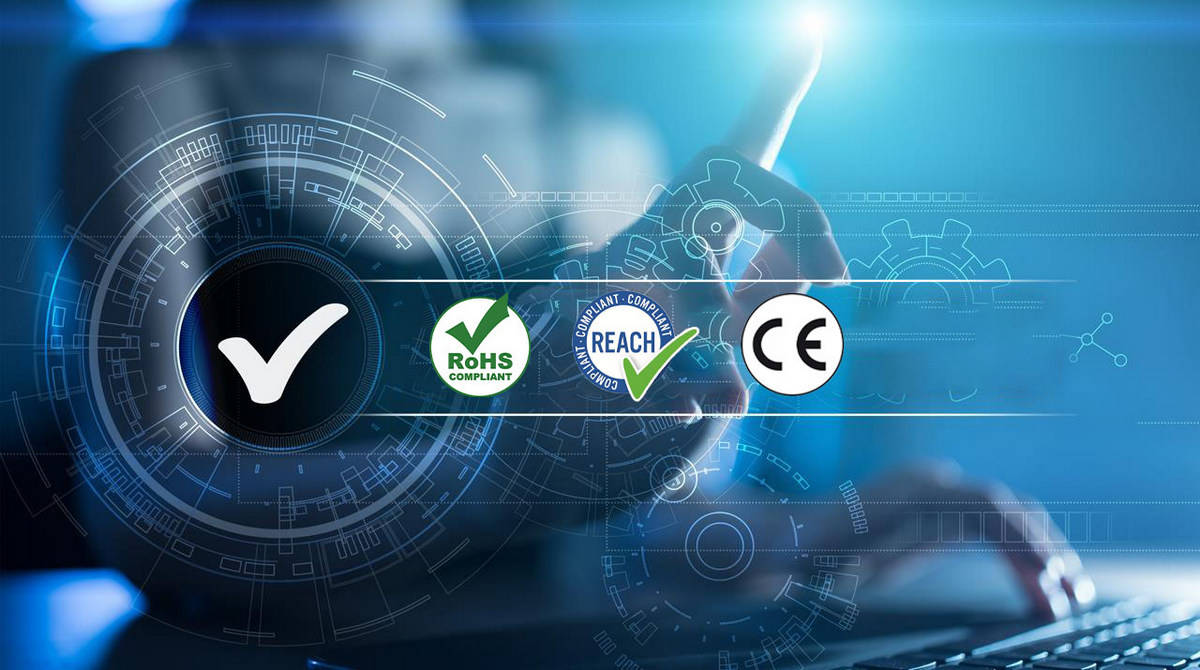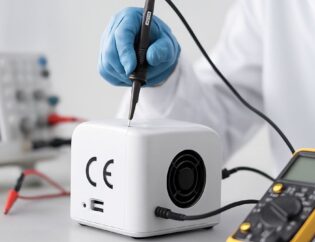
CE Marking and Compliance with RoHS and REACH: Environmental and Health Requirements
Today, increasing consumer awareness and regulatory frameworks prioritize protecting the environment and human health. In the European Union (EU), CE marking, along with RoHS (Restriction of Hazardous Substances) and REACH (Registration, Evaluation, Authorisation and Restriction of Chemicals), are critical elements that must be considered together to ensure product safety and compliance.
For a product to circulate freely in the European market, CE marking, RoHS, and REACH compliance are often assessed in conjunction.
What Is CE Marking and What Does It Cover?
The CE mark indicates that a product meets the technical, health, and safety requirements necessary for free movement within the EU. Beyond safety and performance standards, CE marking is closely connected to environmental and health regulations, where RoHS and REACH are especially relevant.
What Are RoHS and REACH?
RoHS Directive (2011/65/EU):
- Purpose: Restrict the use of hazardous substances in electrical and electronic equipment
- Scope: Household appliances, computers, televisions, LED lamps, and other electronic products
- Target Substances: Lead, mercury, cadmium, hexavalent chromium, PBB, and PBDE
REACH Regulation (EC 1907/2006):
- Purpose: Evaluate the effects of chemicals on human health and the environment and control related risks
- Scope: All chemical substances and mixtures, including paints, cleaners, and chemicals in electronic materials
- Target Substances: Carcinogenic, mutagenic, or environmentally hazardous chemicals
Relationship Between CE, RoHS, and REACH
For a product to be legally sold in the EU:
- CE marking is mandatory
- RoHS compliance ensures that hazardous substances in electronic products remain below the specified limits
- REACH compliance guarantees that no chemicals posing risks to human health or the environment are present in the product
Together, CE, RoHS, and REACH compliance ensures both technical and environmental conformity.
Why Is This Important?
- Consumer Confidence: RoHS and REACH compliance increases product safety
- Regulatory Compliance: CE marking demonstrates conformity with EU legislation
- Competitive Advantage: Compliant products are more easily accepted in the European market
Approach to CE, RoHS, and REACH Compliance
Manufacturers should address these three regulations in an integrated manner. Ensuring RoHS and REACH compliance as part of the CE marking process is critical for protecting both the environment and human health.
Key tools for achieving compliance include:
- Laboratory testing (typically in accredited labs)
- Preparation of technical documentation
- Product analysis and reporting
CE marking, together with RoHS and REACH compliance, is not just a legal requirement; it is an approach that protects the environment, human health, and consumer trust. For manufacturers aiming to enter the European market, achieving this compliance is essential.









